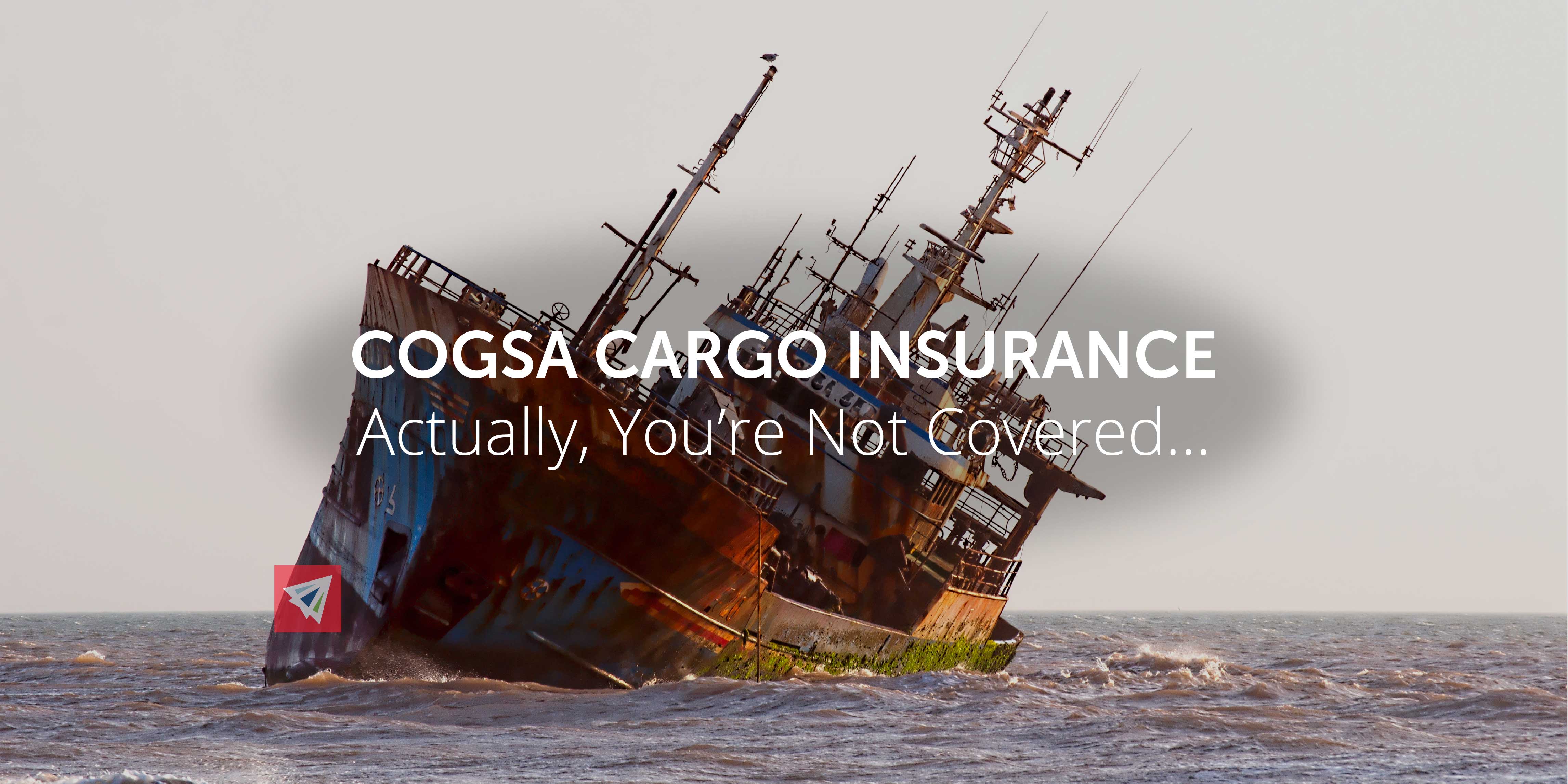No one likes damaged goods showing up to their door. Unfortunately, for those who ship on a consistent basis (imports or exports), it happens more frequently than they’d prefer. But damaged cargo isn’t so bad – after all, you shipment is covered by maritime law, right? While it may be in a sense, it’s probably not covered for as much as you’d think.
Carriage of Goods by Sea Act
According to a congressional act in 1924 called the “Carriage of Goods by Sea Act”, or COGSA, Maritime law only requires that sea shipments be insured for up to $500 per unit. What’s even more disappointing is the slack the word “unit” is given. In many cases, a “unit” is defined as a container. Many shippers are moving $100,000+ of cargo via sea with the assumption that their shipments are covered, however, they may only be eligible to take advantage of a $500 claim should anything happen to their container.
Why Doesn’t COGSA Cover Your Cargo?
In the 1920’s when COGSA was enacted, the majority of cargo was packed and shipped in boxes, crates, and bags. Shortly after COGSA was passed, shippers began utilizing pallets for shipping until it eventually became the new standard. This meant that every pallet was loaded with numerous boxes, crates, and bags of goods. The original $500 per unit was redefined to $500 per pallet when shipowners argue to the court that their liability for cargo damage should greatly reduce since palletizing the goods would protect the cargo more. When courts agreed, shipment coverage changed to $500 per pallet.
When shipping containers gained popularity, ship owners began offering cargo owners the opportunity to consolidate their palletized shipments into ocean shipping containers. These ocean shipping containers were manufactured in two sizes: 8’x8’x20’, and 8’x8’x40’. Shipowners began reserving 8’x8’x20’ spaces on their ships referred to as TEU’s, or Twenty-Foot Equivalent Units.
In another attempt at lowering their liability, shipowners argued to courts that shipping containers were “packages” and that $500 per container of insurance coverage should be enough, even though in some instances containers contained over $500,000 worth of cargo. Many courts were convinced this was fair and passed the redefinition.
It is this imbalance, both in the relative bargaining power of cargo owners, and the superior bargaining power of shipowners, and the imbalance between $500 per container and the true value of a shipment which has led to countless lawsuits and judicial opinions over the “package limitation” problem.
The rest of the world, seeing this as an attempt by shipowners to free themselves from responsibility for protecting cargo, amended the Hague Rules in 1968 with the Visby Amendments which eliminated the “per package” limitation and substituted a limitation per kilogram. In so doing, litigation concerning limitations on liability became virtually non-existent outside the United States. However, Congress failed to pass the Visby Amendments to the Hague Rules.
Losing Lawsuits Over Cargo Insurance
The Carriage of Goods by Sea Act has created a drastic imbalance in the bargaining power of cargo owners and shipowners. As the $500 per shipping unit definition was changed, updated, and redefined, more and more cargo owners were losing money on damaged shipments but didn’t have the leverage in a court of law to win against shipowners.
Unfortunately, the same remains true today. While the definition of a “unit” is fuzzy at best, steamship lines define a container as a unit. Since this has been the case for many years across droves of different lawsuit cases, the chances of any cargo owner making more than $500 on an entire container of damaged goods is slim at best.
What Does This Mean for You?
Insure your cargo! Insurance is incredibly cheap and can save you immense amounts of time, money, and awkward conversations with your vendors and teams. If “breaking the budget” is the sole purpose you are not insuring your cargo, let us remind you – should your container be damaged by any means, you will most likely receive $0-$500 maximum in compensation for the damages.
Unless you’re shipping ping-pong balls, $500 per container of coverage is simply not enough. COGSA does not insure your cargo for you, so you should assume the responsibility of taking care of it. If you are interested in learning more about cargo insurance, pick up the phone and give one of our team members a call. Our operations team is very experienced with cargo insurance and will have tons of recommendations on how you can further mitigate your shipping risks.

One thought on “COGSA Cargo Insurance: Actually, You’re Not Covered…”